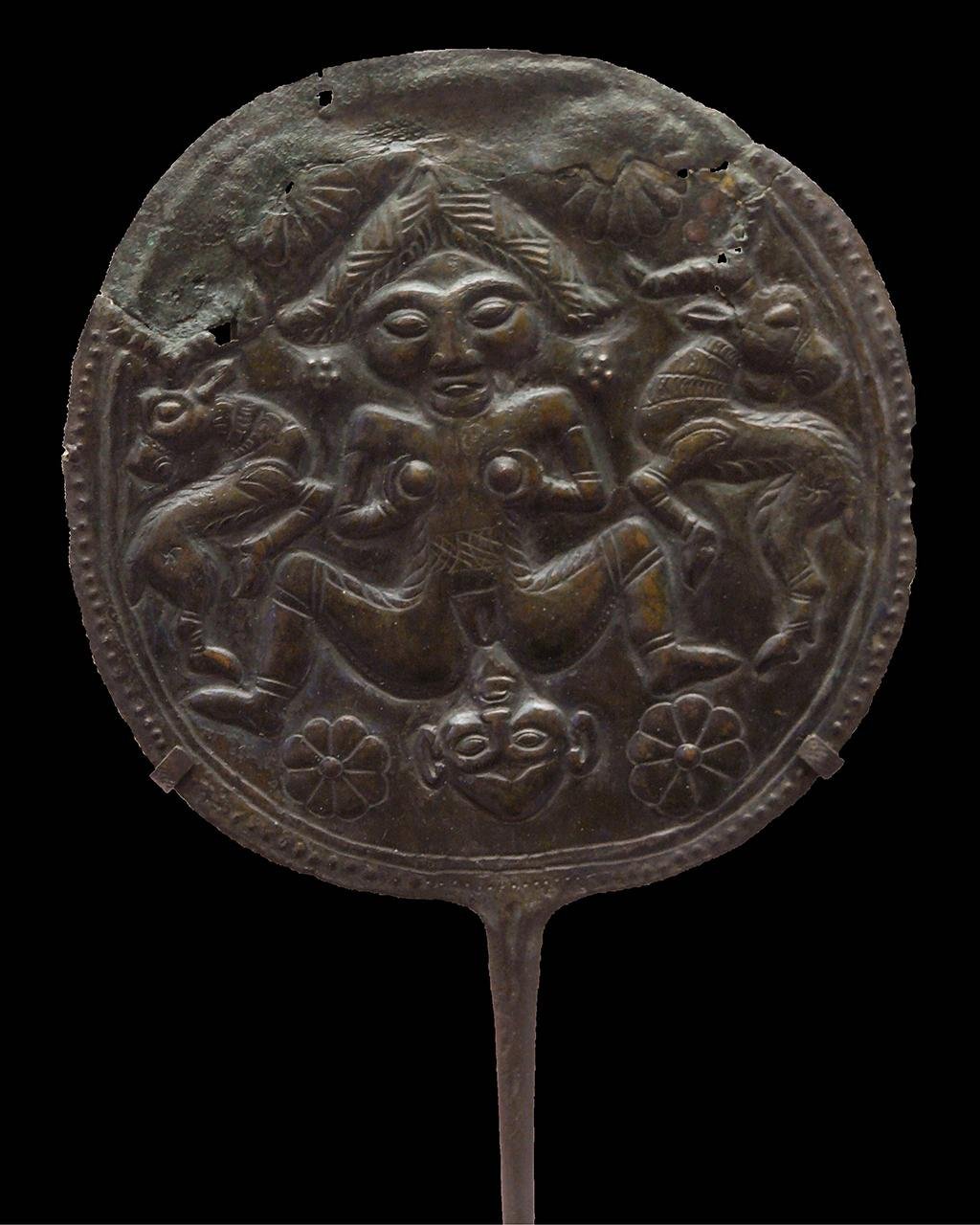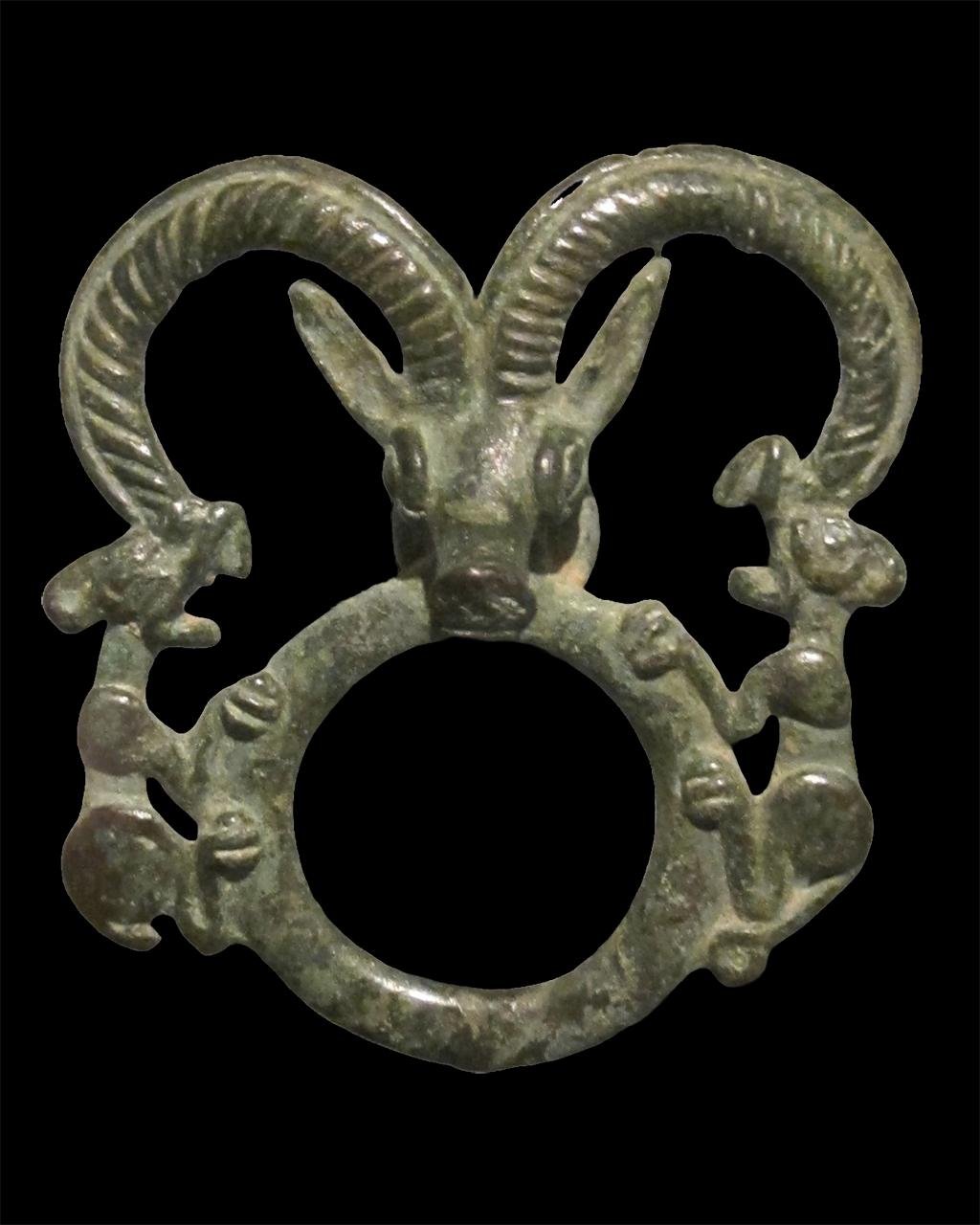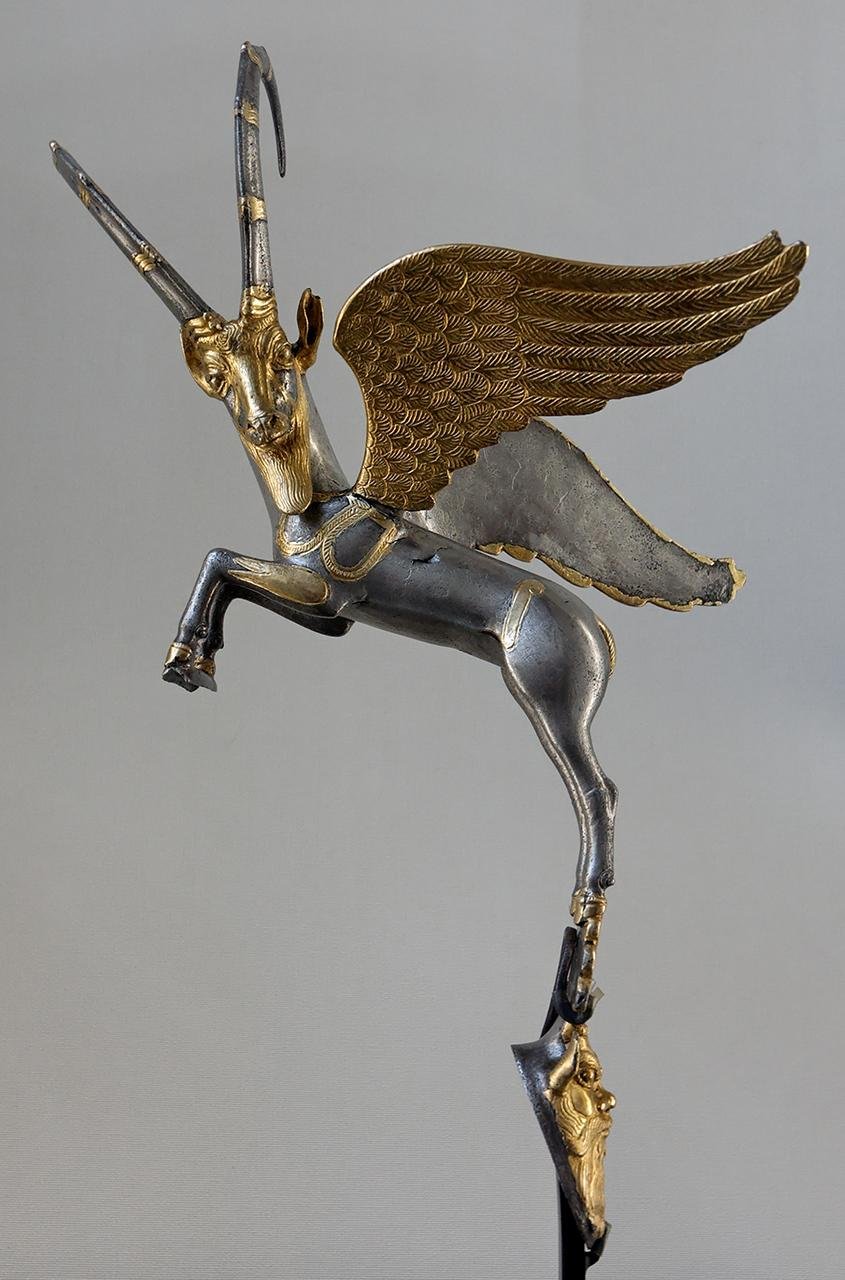A recent study published in L’Anthropologie explains the symbolic meaning of the ibex in ancient Near Eastern and Iranian cultures and how this mountain goat became entangled in fertility, femininity, and cosmology across millennia.
 Bronze plaque dated 1500–700 BCE from Lorestan, western Iran, now housed in the Louvre Museum. Credit: dynamosquito / CC BY-SA 2.0
Bronze plaque dated 1500–700 BCE from Lorestan, western Iran, now housed in the Louvre Museum. Credit: dynamosquito / CC BY-SA 2.0
The ibex (Capra aegagrus), a wild goat native to Europe, Asia, and northeastern Africa, was materially and religiously significant during prehistoric times. Genetic evidence indicates that the species was domesticated about 10,000 years ago in the Zagros Mountains of Iran and eastern Anatolia, leading to the domestic goat—an animal crucial for milk, fiber, and meat production. But beyond its practical importance, the ibex became a profound cultural and religious symbol in prehistory.
Ibex motifs appeared in carvings, rock art, and pottery from the Paleolithic onward, suggesting millennia of continuity of meaning. In early European depictions, the ibex was linked with fertility and femininity. At Laussel rock shelter in France, for example, a Venus figure holds what is believed to be an ibex horn. A similar theme might be found on a Neolithic rock art panel, the Mother Ranaldi panel, showing ibex or deer gathered around a woman giving birth. According to the authors, ibex symbolism is consistent, and this is supported by strong archaeological evidence, such as Paleolithic cave paintings, Neolithic features, and Bronze Age artifacts.
 Harness ring depicting an ibex and felines, Luristan, Iran, 10th–9th centuries BCE.
Harness ring depicting an ibex and felines, Luristan, Iran, 10th–9th centuries BCE.
The same motifs were repeated in the ancient Near East. The water god Enki, ᴀssociated with the Tigris and Euphrates rivers, was often shown together with ibex imagery, linking the animal to life-giving waters and seasonal fertility. Such an ᴀssociation may have been due to the fact that the ibex mating season coincided with Mesopotamia’s autumn rains, effectively making the animal a natural time indicator. Even in Babylonian literature, Inanna refers to her vulva as a “horn,” further establishing the animal as a symbol of Sєxuality and fertility.
 Vessel handle shaped as a winged ibex with hooves on a Silenus mask, partly gilt silver, Achaemenid, 4th century BCE, Louvre Museum.
Vessel handle shaped as a winged ibex with hooves on a Silenus mask, partly gilt silver, Achaemenid, 4th century BCE, Louvre Museum.
Archaeological findings from Iran provide tangible evidence of this symbolic role. A bronze plaque dating between 1500 BCE and 700 BCE depicts two ibex on either side of a parturient woman, recalling the Neolithic imagery in Europe. The ibex was employed throughout Iranian prehistory on pottery, metalwork, and rock engravings, from Tall-i-Bakun and Tepe Hissar through to Susa and beyond. These motifs also carried into later periods—appearing in Achaemenid tattoos, Sᴀssanian metalwork, and even Islamic-era tile art.
The ibex’s celestial dimension was also significant. In Mesopotamian texts, the ibex is called si-mul, “star-horned,” and in Iranian symbolism it often appears with sun and star motifs. Its enduring legacy continues in the zodiac sign Capricorn, the goat-fish constellation tied to rain and fertility. As the study explains, ancient societies may have believed that the mountain-dwelling ibex was inherently connected with the heavens and cosmic cycles.
 The ibex was materially and religiously significant during prehistoric times. Credit: Alexander Malkhasyan / CC BY-SA 4.0
The ibex was materially and religiously significant during prehistoric times. Credit: Alexander Malkhasyan / CC BY-SA 4.0
The symbolism of the ibex thus reflected both its physical appearance and its role in daily life. In Neolithic and nomadic life, goats played a central role in food and textile production, while spiritually they were symbols of fertility, femininity, water, and the celestial order. It is this dual role that explains the frequency of ibex motifs in prehistoric and historic art across Iran, Mesopotamia, and other regions.
By weaving together myth, biology, and archaeology, the study reveals that the ibex was far more than a game animal or domestic resource. It was an animal that stood for the rhythms of life, the cycles of nature, and humanity’s effort to understand its place in the universe.
More information: Torkamandi, S., Otte, M., & Motarjem, A. (2025). Analyzing the symbolic meaning of bovidae in prehistoric cultures, particularly emphasizing ibex motifs in ancient Iranian arts. L’ anthropologie, 129(4), 103384. doi:10.1016/j.anthro.2025.103384





